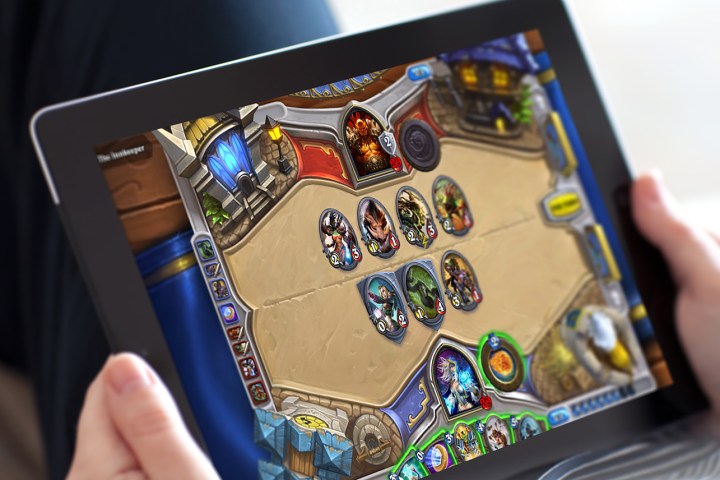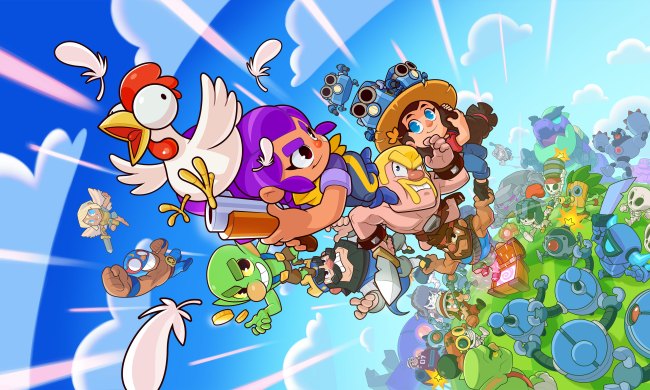
In response, livid gamers submitted numerous examples of games that can (rightly) be used to refute that argument. But when it comes to the vast majority of games that people are playing on their mobile devices, Ebert was right.
Over the last decade, we’ve seen the rise of mega-hits like Farmville, Candy Crush Saga, Clash of Clans, Kim Kardashian: Hollywood, Hearthstone, and many more of the “freemium” games that litter the mobile marketplace. They’re free to play as long as you’re willing to grind your way through a minimal experience. Otherwise, players are free to spend hundreds (or even thousands) of real dollars to buy the virtual currency needed to supercharge the experience.
No matter how users stumble into a freemium game, once they’re hooked, almost every title is an unending staircase.
Games have always been about manipulating the experience of the player, but data analytic techniques are bringing this to the next level, by focusing on profit over play. Game designers now employ the same techniques used by companies like Google and Facebook to optimize user behavior. By cleverly blending together hardcore sales tactics with the pure addictive rush of gambling gameplay, they can push players to the very brink of rage-quitting frustration without actually shoving them over into the abyss of never playing again.
This isn’t art. Instead these games are almost pure commerce: powerful engines of compulsion using arcane formulas derived from hardcore economics and big data designed to keep you playing (and paying) for days, weeks, or even months. And the trend has already grown to include PC and console games as well.
The rise of freemium
With hundreds of millions of players all over the world, freemium games are the first to reach a truly mass-market audience. Unlike traditional gamers, these “casual” players are looking for something that will help them to while away the hours while riding mass transit, waiting for dinner to cook, or even watching TV. They’re simply looking for engaging repetitive fun, not something that will transport them to another universe, or blow their minds inside a virtual-reality experience.
They’re not looking to waste time or money playing something they don’t like. Not long after games first appeared on the app store, it became apparent that the price most people were willing to pay for games on their mobile devices was … nothing, or very close to it. Experiences that once sold for $60 on a console were now selling for a buck on your phone. Developers responded to this race to the bottom by giving the games away for free. And in order to make money, they loaded them with in-app purchases that would appeal to players who were already hooked. Spending cash would allow you to speed the game up, avoid obstacles, and gain powerful abilities.
Hardcore gamers have complained loud and long that these games are snake oil: addiction masquerading as entertainment. But the numbers don’t lie: Freemium works. The most popular titles have millions of players delivering developers returns of hundreds of thousands of dollars every day.
High stakes in the race to the bottom
The result has been that the app store for both iOS and Android devices are now jam-packed with thousands of freemium titles, and hundreds more appear daily.
Each and every one of them is desperate to get noticed, and the cost of getting someone to play your game is now over $10 per person. That leaves desperate developers paying top dollar for celebrity marketing campaigns, getting A-list personalities such as Kate Upton and Arnold Schwarzenegger to appear in their Super Bowl commercials. With that kind of money on the line, they’re forced to use every tool available to try and go after a player’s accounts by going straight through their heads.
Data analytics are the most powerful tools in the box. Modern mobile games are constantly streaming data back the creators. They can (and mostly do) record every twitch and tap, from the first moment a player opens the game to (and this is particularly important) the final move they make before banishing the app back to whatever purgatory it goes to when they close it for the last time.
This information gives the developers who use it effectively a great understanding of what players are likely to do, based on their similarity to other users doing similar things. By sorting their audience by tendencies, developers can gain deep insight into how players react, connect, and spend their time – and money.
Hungry birds
If you’re worried that they’re manipulating you, you don’t need to freak out. No amount of data analysis can remove your individual place as a unique and special snowflake, but when your data is piled next to information from thousands and thousands of other users, your particular uniqueness and individual quirks are about as meaningful as a single flake in a snowdrift: which is to say, not at all.
Most players understand that they’re being exposed, but don’t care or understand what developers do with that data. Big data strip mines your experiences and interactions, grinding away everything except for your actions and tendencies, reducing the audience to its most basic wants and needs. And far too often, gameplay reflects this “hungry bird” mentality.
Freemium games use this data to convince people to play, then push players to come back. Traditionally, games grabbed our attention by being fundamentally unique or exciting. Free-to-play games do it by becoming more addictive. The more time a player has invested, the more likely they are to spend money as a means to reap the rewards of that investment. And once they’ve spent, they’re hooked. Players feed that addiction by converting dollars to in-game currencies that, once purchased, they can spend to minimize their effort while maximizing the rewards.
In a very real sense, data analysis has transformed the bucolic worlds of gaming fantasy into a capitalist fairy tale where the only way the player can defeat the orcs at the castle gates is by swiping a credit card.
You can’t uncast this spell
Developers have tried to resist, but if you’re looking to make a profit in the mobile game space, there’s little choice but to play along. The gatekeepers at Apple, Google, and Facebook get a significant percentage of every dollar spent, so they aren’t fighting the tide. And besides, they were the ones who started optimizing data for profit years ago.
Developers can gain deep insight into how players react, connect, and spend their time – and money.
I started doing social mobile design almost a decade ago, and during that time I’ve watched many developers who told me they would “never make those kinds of games” slowly succumb to the unending pressure of monetization. The same skills they once used to craft richer and more imaginative experiences are now used to optimize user attention experience for profit.
While freemium games may not be art, that’s not to say there isn’t any artistry left in their creation. Supercell, a company out of Stockholm, has managed to produce hits that are truly well designed, and precisely crafted. They understand that the key to making a great game with big data is by starting with an incredibly creative idea. Then they take the time to make sure every element is not only utterly polished, but fully tested with analytics. They combine an avalanche of user feedback with multiple iterations of development, crafting great ideas and throwing them away again and again, until every aspect of the game is honed to a gleaming finish that represents the pinnacle of development and data analysis.
But the majority of developers don’t have the millions of dollars it takes to devote that kind of time to craft their games. They also lack the millions more dollars needed to get acquire an audience from a pool that already has far more choices than hours to spend on their entertainment. For these developers, the tools they uses are often much more crude, and they’re often coming perilously close to selling pure snake oil instead of a genuine cure for boredom.
Ascending the staircase
No matter how users stumble into a freemium game, once they’re hooked, almost every title is an unending staircase. They’re designed so that each step up only leads to more options, and more opportunities to spend more money, and more time in the pursuit of the next goal. It’s an infinite climb that, for some players, can have more in common with addiction than entertainment.
When it comes to understanding freemium, the best advice may be the message that Matthew Broderick received back in the ‘80s when he tried to win the War Game against a machine: “The only way to win, is not to play!”
But even if you know that, it doesn’t mean that you still won’t get hooked. I’ve seen the data to prove it.




